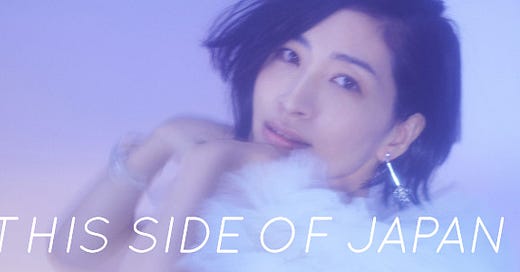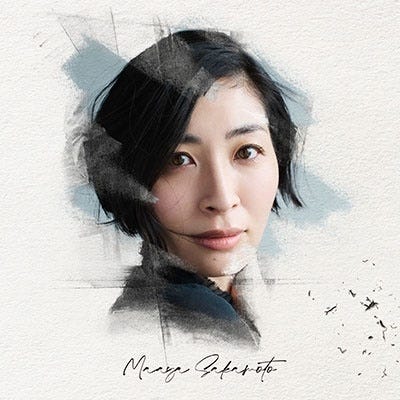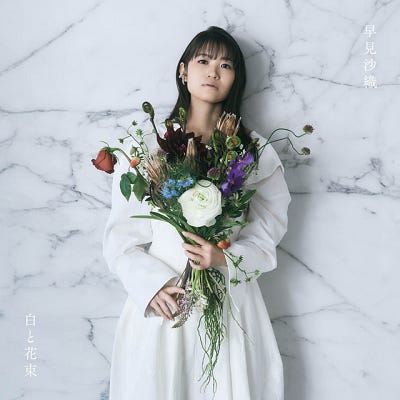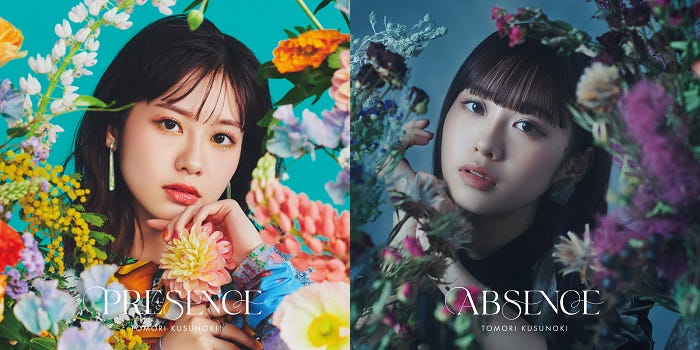Issue #69: Library of Memories
Getting into a round-up of great new seiyuu albums, Down Town Boogie Woogie Band's enduring #1 and my ongoing research into anison
Hi! Welcome to This Side of Japan, a newsletter on Japanese music, new and old. You can check out previous issues here.
For the past year or so, I’ve been trying to hear anison more as music other than itself by tracking down its possible stylistic roots. Technically more a commercial category than a genre, anison organizes artists and records marketed for fans of anime through their relation to the anime industry. Though, it has developed a specific, recognizable style through the tics, sounds and structures introduced by popular releases over time, like the infamous 89-second rule1, which can serve as definitions of anison as a musical category as well.
We can refer to a few different examples in order to define “the anison sound,” like the branch of pop punk or metal unique to what frequently backs opening credit rolls. The style in particular I’ve been invested in deconstructing has been the kind of twinkling, kitchen-sink pop that often sounds naive as its prim voice actress singing the song, with the music sometimes zooming at 1000% speed. The kind of songs that, say, Yui Ogura excels at delivering. The type of music that’s hard to describe without using a collection of adjectives and similes, without saying anison outright.
“Bouken Desho Desho?” by Aya Hirano
Anison of course carries a vast history stretching back at least the ‘60s: after all, it initially described simply the songs attached to a particular show. Every decade is worth investigating, but the time period that drew me in was the 2000s due to—and this is more of my own theory—the development of the anison sound during this era intersecting with the development of what I call the oudou, or “traditional,” idol sound that’s been prevalent since at least the late ‘00s—a similarly bubbly, bright pop sound found in the music of, say, Momoiro Clover Z’s “Hashire!” or AKB48’s “Oogoe Diamond.” I felt compelled to investigate anison if I was to better understand idol music.
I stumbled upon a lead to my personal research while reading an old interview with Negicco and the group’s producer connie. The latter listed 3 albums that inspired the making of the trio’s then-latest album, 2013’s Melody Palette, which were NONA REEVES’s POP STATION, Kana Hanazawa’s Claire and Ayana Taketatsu’s apple symphony. Those records shared a mutual inspiration with Negicco’s music in Shibuya-kei, and with the latter two seiyuu albums in particular, it made me wonder if Shibuya-kei played a part in building the anison sound in general. I was certainly reminded of the subgenre when I listened to Aya Hirano’s “Bouken Desho Desho” after The Melancholy of Suzumiya Haruhi introduced me to the tune around the same time. Hirano’s voice might not be as airy as Hanazawa’s, Taketatsu’s or the vocalists behind the French pop records admired by the original Shibuya-kei scenesters, but the baroque arrangements wouldn’t sound too out of place in a playlist with the works of Pizzicato Five’s Yasuharu Konishi.
Digging deeper into Shibuya-kei in the 2000s eventually led me to its sibling subgenre of picopop that felt close in spirit with the faster, more frazzled anison tunes. While the genre’s legitimacy is questionable, I do like how the onomatopoeia-derived name succinctly describes its defining high-pitched synth sound also associated with its other relative, chiptune. It might not be as scrambled-sounding as a DIALOGUE+ song, but the synth-firing power-pop behind a record like Sonic Coaster Pop’s Future Electro Star pointed to the possible origins of J-pop as it lives in the modern, anime-influenced imagination, this blindingly bright synth-pop music that’s bouncing off in multiple directions at once.
“We Love AKIBA-POP!!” by MOSAIC.WAV
To further understand the busier side of anison, it felt necessary to dig into another adjacent J-pop subgenre: denpa music. An influence to both anime and idol music, denpa is essential in understanding the foundation of the kind of otaku music, for lack of a better word, central in this research. Plus, I wanted to know more about the roots of one of my top favorite idol groups, Dempagumi.inc, who happened to recently release a single nostalgic for the heyday of the Akiba scene with key producers of its music.
One of those producers behind the recent Dempagumi.inc singles is MOSAIC.WAV, and their 2004 song “We Love AKIBA-POP!!” sounds like the intersection of all of those points of interest from idol, otaku and Shibuya-kei. The production sounds like a nightcore edit of Shibuya-kei at its moody late-night disco mode, kind of like early Capsule at its most melancholy. The vocals meanwhile emote in a variety of exaggerated ways—a fun pop experimentation also found in the image songs of its era—as it trades lines back and forth in a way more seen in idol songs in the next decade. What’s more impressive to me are the incorporation of what sounds like wota chants to today’s ears—an essential strategy used today in idol-group-based anime music, like Aqours. “We Love AKIBA-POP!!” somehow sounds both squarely of its time and predicting of the music to come.
I’ve only scratched the surface. These discovered records point only to clues to the answer, at best echoes that suggest a conversation shared between the music, however loosely. I still also got to familiarize myself with actual anison and more of its classics. But the music sounds a tad clearer than before as it does richer now that it has opened up so much more. I only hope to learn more with more listening.
Here’s a small list of albums I checked out for the first time this year following this anison rabbit hole:
Ayana Taketatsu - Apple Symphony
MOSAIC.WAV - AKIBA POP RECOLLECTION
NONA REEVES - POP STATION
Serani Poji - Ochamekan
Sonic Coaster Pop - Future Electro Star
Sonic Coaster Pop - Super Miracle Circuit
Strawberry Machine - Crazy Kit
YMCK - Family Music
Maybe it’s my recent trip to Anime Expo inspiring me to blog about anison, but there will be a bit more writing on anison down the line in the Album of the Week section, which is a little different again from a standard one-album review. More music for you! We got more variety for Singles Club and our Oricon flashback if you’re not the type.
Happy listening!
Album of the Week
These past couple of months saw some of my favorite voice actresses releasing great albums, so I decided to round them up for this section. Enjoy!
Kioku No Toshokan by Maaya Sakamoto [Flying Dog]
*Recommended track: “discord” | Listen to it on Spotify
More than two decades separate Maaya Sakamoto’s 11th album, Kioku No Toshokan, and some of the classics that got me into the voice actress’s music, like “Platinum” and “Yakusoku Wa Iranai.” Yet her expression of curiosity has yet to lose the potency as it had then. Arriving just as I was deep into her catalog, last year’s “Kotoba Ni Dekinai” was case in point: while h-wonder’s folk arrangement hung at a lower altitude than her more soaring tracks, the rich, sentimental music worked as a fine vessel for Sakamoto’s poignant self-reflection on departure: “I’m only who I am, but I want to find something I can do,” she sighs in the chorus. “Even if I’m far away, I’ll let the winds carry all this love.”
A few non-anison arrangers shake up Sakamoto’s usual process in Kioku Toshokan. Tricot supplies math-rock that meets her halfway for “Ichidoki De Ii,” untangling some of the wiry ends of their riffs but still explosive; cero’s Yu Arauchi offers a more impressionistic take on Sakamoto’s majestic pop in “Naimononedari” with the arrangement constantly at work at a micro level. But the most staggering makeover comes from “discord,” where Anna Takeuchi and Daisuke Kawaguchi transforms her into what resembles instead a weekend warrior chasing the dance floor to the tune of house-inflected R&B. After spending years wrapped up in the matters of the heart with heavenly music to match, Sakamoto’s dip into the sounds of metropolitan disco truly presents an alternate, otherworldly realm.
Sapphire by Yuki Nakashima [NBC Universal]
*Recommended track: “Sapphire” | Listen to it on Spotify
The bright pop tunes in Yuki Nakashima’s debut album Chapter I appear everyday at the face of the lush synth-pop from her follow-up, Sapphire, where the standouts are eager to awe through the scale and sheer details of its embellishments. The sweeping arrangement behind “Utsuroitokimi” aims for a newfound sense of grandeur while the toybox pop of “Watagashi Watashi” entices with its granular fizz and sparkles. Paired with Nakashima’s vocals, airy as it is high-pitched, the latter track in particular makes for a dreamy tune like the voice actress loses herself in the scene. The refinement in the production of Sapphire presents music that’s not just bedazzling but engrossing.
Shiroto Hanataba by Saori Hayami [Warner Bros.]
*Recommended track: “Shiko” | Listen to it on Spotify
Back in January, I remarked how “Shiko” reinstated a sense of momentum in the music of Saori Hayami, whose prior releases had consisted of more resolute ballads. The new album tracks collected in Shiroto Hanataba, her first full-length since 2018, further diversify her range. The called-upon arrangers gestured to an adventurous approach in style when announced during pre-release, and some of them do reel the voice actress to their own orbit: the fluffy synth-pop of “Ordinary,” the skip-happy math-rock of “Toumei Singer” and the fragmented jazz of “Emerald” hardly hide the fingerprints of Tomggg, Pusu, Yukichikasaku/men, respectively. That said, the most rewarding number comes from somewhere close to home with frequent collaborator Tatsuya Kurauchi (also Love Live!, Macross, to name a few) handing her the sultry electro-pop highlight “Flourescence.”
A particularly unexpected contribution comes from Kaoru Ookubo, who gives Hayami a pair of symphonic anison ballads — a far cry in sound from the arranger’s EDM works for Hello! Project. And yet a few listens to Shiroto Hanataba reveals he sees what best suits the voice actress: While the exercises in sleek synth-pop or Vocaloid-esque rock freshens her music, Hayami’s voice best thrives in those epic, mountainous ballads. TK from Ling Tosite Sigure understands as well, letting the voice actress adopt in “Awake” more of his sharp, bloodletting high notes than his frantic metal. “Shiko” remains the album’s strongest not only because it lends it movement but it also amplifies the intensity and drama that Hayami’s capable of delivering at her best.
Presence / Absence by Tomori Kusunoki [Sony]
*Recommended track: “Yarazunoame” | Listen to it on Spotify
Don’t let the visuals convince you too much into thinking of Tomori Kusunoki’s pair of full-lengths existing in some strict binary: the vibrant and lively Presence vs. the stark and melancholy Absence. The latter opens with a rather optimistic power-pop number, for one, and the maudlin rocker written by Co Shu Nie is actually found in the former. The voice actress spreads colorful and moody tracks through the years across both the double albums that are better understood as twin siblings than split personalities, sometimes showcasing the opposites in great sequence. The furious guitar scrawls of “Yarazunoame” in Absence strikes extra sharp following the whimsical, slightly cryptic whisper-pop of “Strange X.” Likewise, after the mannered posture behind the jazz-pop of “Akatoki” in Presence, there’s an added thrill in hearing how music behind the shifty rock of “Seiten No Hekireki” just spill over like a hot, loud mess.
Singles Club
“You Are Loved” by Big Animal Theory [The Eyes of Fury]
The brief, cryptic bio of “Always Anonymous” posted on the Bandcamp page of Big Animal Theory gestures to how the producer’s latest drop sounds, too, with the off-kilter garage beat of “You Are Loved” warped by wonky bass and helium-shot vocals, almost self-satisfied from the obscurity. From the referenced pocket of UK dance to the producer’s willfully enigmatic approach, I can’t help but be reminded of the more post-dubstep-nostalgic side of Two Shell when I listen to this single. Though, “You Are Loved” is less driven by irony than a giddiness granted when you’re moving incognito, free from consequence as they mess with the levels.
Listen to it on Bandcamp/Spotify
See also: “High” by AWZ; “trline” by uku kasai
“num” by FIXED [self-released]
The title track to FIXED’s new full-length, NUM, gets straight into the madness with the hardcore band immediately launching into a seething scream before laying down its guttural riff. But while they play it fast and loose, it’s as agonized as the brooding meditations further down the record. “It’s no good even if I get more / it gets no better whether I share or gain,” they go as brutal punk rages on, the tortured lyric shouted out like they’ve been cornered in. And the mental jostling continues in NUM without reprieve.
NUM is out now. Listen to it on Bandcamp
See also: “Toozakaru” by MEIAN; “Early Days” by Sugar
“SAKURABA” by Jinmenusagi [Go-Hanetz]
Jinmenusagi usually turns inward in his songs, snatching brooding trap beats to rap about his own emotional anguish. But while “SAKURABA” carries some of the familiar gothic menace through the beat’s slow-burning synth, the club-inspired percussion transports the rapper to a different zone that looks beyond the four walls of his own mental prison. The drums knock still too sparing a beat to imagine this in piece with proper dance tracks, though it does inspire him to view outward, calling out cowardly rappers who do nothing but run their mouth. “Jimesagi-san, just an old man / destroyed the character,” he quips at one point, like he’s tiring of even himself. Maybe, then, “SAKURABA” points to something new on the horizon.
Listen to it on Spotify.
See also: “R3BORN” by Neo Iceyy; “Love Is Money?” by ODD Foot Works
This Week in 1975…
“Minato No Yoko Yokohama Yokosuka” by Down Town Boogie Woogie Band [Toshiba EMI / Express, 1975]
No. 1 during the weeks of June 23 - July 21, 1975 | Listen to it on YouTube
Out of the countless commercials she has appeared in over the past few years, Haruna Kawaguchi hasn’t been instructed to be as blatantly open about her value as a talent than her spot in this year’s ad for NIDEC. “The strategy behind this is to make you remember the name NIDEC by using the logo and my cuteness,” the model-turned-actress winks to the screen. Despite the desperate efforts, the company’s name nor profile stuck to my memory, and maybe it’s karma for completely failing to mention the other key element to their selling strategy: reworking Down Town Boogie Woogie Band’s “Minato No Yoko Yokohama Yokosuka” and the song’s immortal hook as its jingle.
If the NIDEC ad succeeded to sell anything, it’s the effectiveness still left in the tricks pulled by DTBWB in “Minato No Yoko Yokohama Yokosuka” after nearly 50 years since the single’s release. A slick blues riff steadily chugs along as the backing beat of a narration done by DTBWB’s frontman Ryudou Uzaki until a dramatic cut to silence give way for the hook: “And what are you to her anyway,” Uzaki utters at the end of every verse as though he’s giving you the nastiest look of suspicion. Though the ad presents the content of the hook as if it’s ran through multiple channels in a game of Telephone, it keeps in the same set-up behind the delivery that helped the song stick to the cultural consciousness in the first place.
Despite its success that got it to stay multiple weeks on top of the Oricon, “Minato No Yoko Yokohama Yokosuka” originally served as a B-side to another single. Inspired by a Johnny Cash tune Uzaki listened to growing up, the spoken blues style stuck the track out of the pack, but that very off-kilter style also understandably lend the song to be a bit too adventurous to choose as a lead single. The overall personality of the song, too, made the previous records seem clean-cut in comparison. While the ramshackle ‘50s rock lightened up a record like “Smokin’ Boogie,” the stern blues loop let a sense of unease linger as though one stumbled upon the wrong part of town. The band doubled down on the image of rock ‘n’ roll as music for street punks, a motif that also inspired their visual aesthetics.
And that’s before you get into the narrative. Each of the 8-bar verses tease out tidbits about the titular woman told through multiple vantage points until the hooks flips the script to you, the presumed person who asked these people about her in the first place. The song smartly keeps the identity under wraps for the story’s sake but also to perhaps fly the content past the censors. “She never said hi to us / she stole Mari’s customer, and that was a riot,” shares one of the characters; “A customer touched her somewhere / and then she flew out the store,” goes another. And this tale of someone trying to find the whereabouts of a prostitute followed a innocent, if not gimmicky rock ditty named “Smokin’ Boogie.”
As history would show, the narrative details did not bother much nor did its spoken-blues delivery hinder the song’s potential to be cut instead as a separate A-side and eventually a time-proven hit. I’d argue whatever story unfolds seem beside the fact against the set-up and punchline. Proven to be so malleable as it is memorable, it’s what a piece like the NIDEC commercial is more occupied with anyway: even if you don’t rework the “anta, ano ko no nannanosa” script to your own use, the dramatic pan in still sufficiently delivers whatever joke. More a meme than a song maybe, but it didn’t end up to be so bad for Down Town Boogie Woogie Band.
You can listen to all of the songs covered so far in this section in this playlist here.
This Side of Japan has a Ko-Fi as a tip jar if you want to show appreciation. A subscription to This Side of Japan is free, and you don’t have to pay money to access any published content. I appreciate any form of support, but if you want to, you can buy a Coffee to show thanks.
Next issue of This Side of Japan is out July 24. You can check out previous issues of the newsletter here.
Need to contact? You can find me on Twitter or reach me at thissideofjapan@gmail.com
89 seconds is the ideal, practically industry-established length to effectively fit a song’s arc from intro, first verse to end of chorus within the duration of the show’s opening credits.








